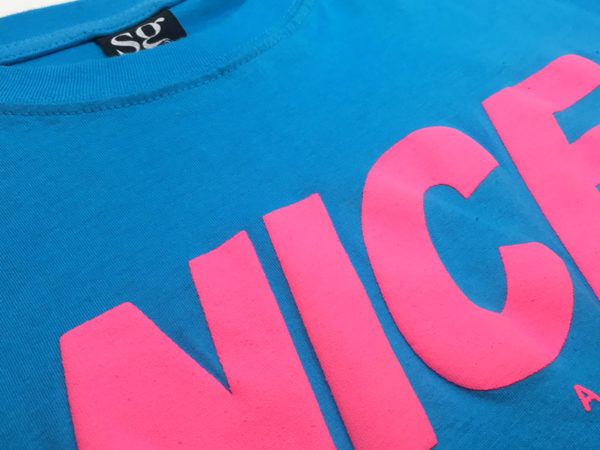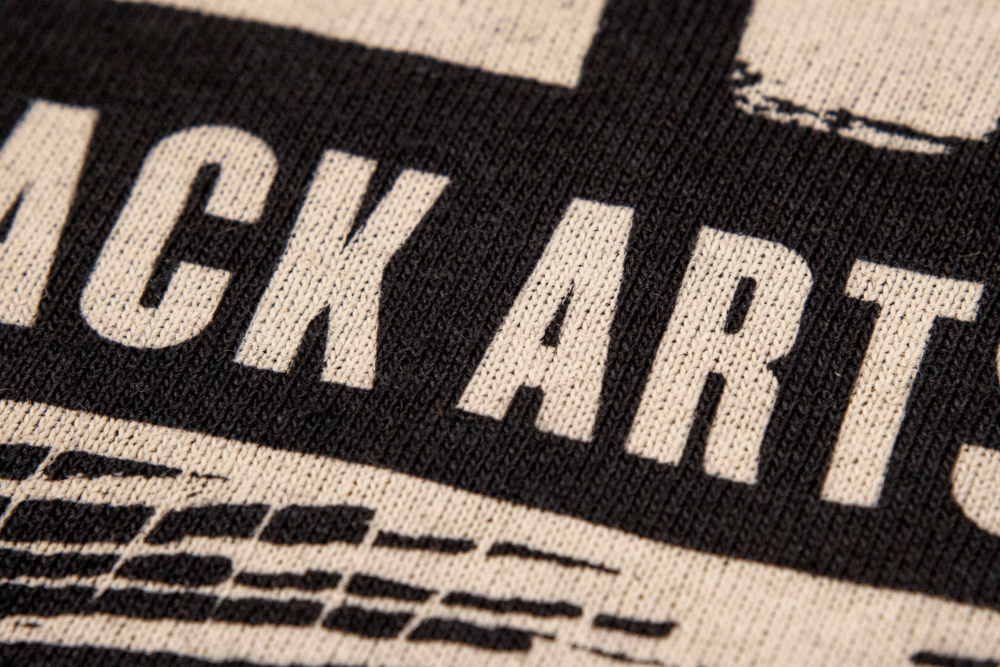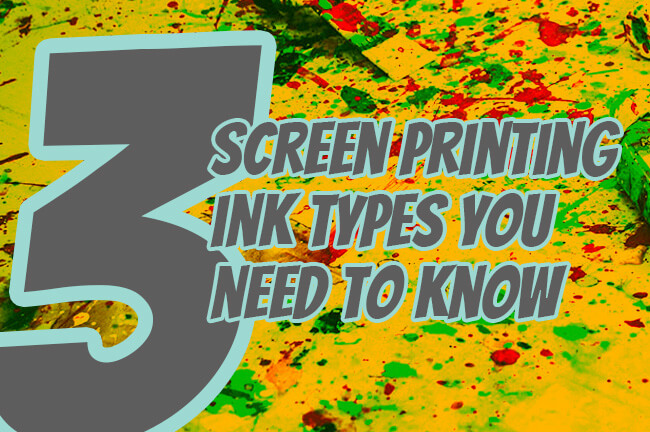Screen printing has evolved a whole lot over the years.
Let’s get straight to the point – there are 3 main screen printing ink types we typically use and they are:
- Plastisol/Traditional
- Water-based
- Discharged (Most people will categorize this under water-based, but let’s keep this separate)
Plastisol inks

Also known as the “traditional” way of screen printing, Plastisol used to be the only ink type professional printers would use back in the 80s.
To the touch, this ink feels plasticky (hence the name) and looks glossy as its a thick layer of ink that stays on the garment instead of blending with the fibers.
For those of you who were fortunate enough to live through the 80s and 90s, I’m sure you’ve owned a t-shirt or two that has been printed using plastisol.
And remember how you were warned never to iron on the graphic? – yeah, plastisol melts.
As an ink to work with, this will never dry out.
This means you can leave it on your screen after a job, shower, meet up with some friends, have 10 rounds of beer, shoot pool, have a hangover for the next 15 hours, come back to your screen and start squeegeeing where you left off.
Because plastisol is oil-based, this ink only starts to cure under high temperature.
Keep in mind that when working with plastisol, you are going to need a heating element that can produce enough heat to properly cure the ink.
And unlike other screen printing ink types, Plastisol works well with any material – 100% cotton, tri-blends, rayon, synthetic, etc. and is popular with 4 color process printing.
However t-shirt printers are moving away from it as current demands and fashion trends are focusing on smooth and lighter prints.
Plus, plastisol is harmful to the environment even if some manufacturers claim that it’s phthalate-free.
But if you wanted to print curtains or bags, plastisol is great! Done correctly, plastisol won’t crack, peel or fade for well over 10 years. Plus, if you wanted to make your prints softer, there are additives you can mix with, or you could simply lay down less ink.
As for the costs, check around your local supplies shop – word is out that plastisol is actually cheaper than other ink types as demand has dropped.
Water-based inks

As opposed to oil, water-based inks are increasing in demand, primarily because of its eco-friendly-ness with mother nature.
As hipsters and fashionistas are well in support for going green, you can find most t-shirts these days to be printed with water-based inks.
There are a few major ink companies that have gone completely green and have produced some impressive innovative ink tech.
They are however, charging more for their eco-inks, but if you have a conscience and you’re trying to minimize carbon footprint, go water-based.
Working with these inks differ in the sense that they do dry up quicker than plastisol.
In fact, when I work with water-based inks I rarely leave my screen sitting for more than 3 minutes.
Even in a humid environment, the ink dries up between the mesh so fast that it can really screw up production.
Having said that, I do however, enjoy the results more so compared to plastisol.
Colors don’t pop and aren’t as vibrant, but I usually give an extra pass on the screen to solve this issue.
Read more: Water-based VS Plastisol? 7 Tips to Find Your Ideal Ink Type
Discharged inks

Many screen printers would categorize discharge ink as water-based because of some similarities, but I feel this is going to confuse many.
As the most technical of the two screen printing ink types above, discharge printing gives you that ‘no-hand’ feel to the touch and it can also produce some pretty impressive results.
Popular back in the 80s as an alternative to using plastisol inks, most t-shirt boutiques now are adopting this method again and are putting out ‘retro’ designs that you currently see as the trend.
Discharge inks contain a bleaching agent. When you lay down the ink onto the garment, the agent removes the shirt’s dye (bringing it back to the garment’s original color), and replaces it with the color that you want – red, blue, green, etc.
When this happens, imagine stripping one layer of ink and replacing it with another – and that’s how you achieve a ‘no hand’ feel.
The downside of this method is the difficulty in achieving exact colors, plus, discharge only works on certain types of garments.
Which ink should you go for?
As you can probably guess, screen printing isn’t as straightforward as it looks.
The type of ink you choose depends on the results you want to achieve.
The best and most successful prints are a marriage of ink, fabric and knowing how to match them both according to your skill set.
Obviously this will require research and experimenting since you can’t start with discharge ink in your first week of screen printing.
Nevertheless, I’m always an advocate for trying new stuff so definitely try each type of ink you feel will suit your style and needs, there’s really no wrong path since you’ll learn as you go along. Good luck!


Thank you for taking the time to write such a detailed and informative post on screen printing inks. I also appreciated your insights into the different types of inks available, as this is something I was not previously aware of. Overall, this was a great article and I would recommend it to anyone interested in learning more about screen printing.